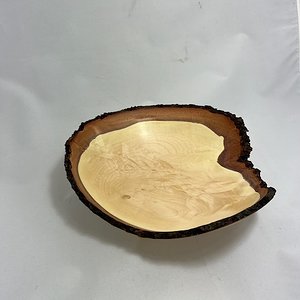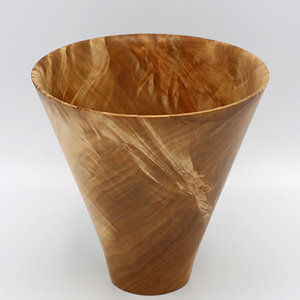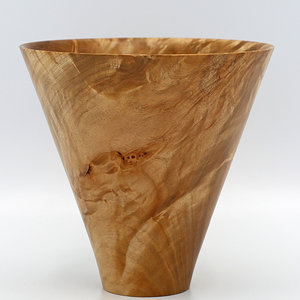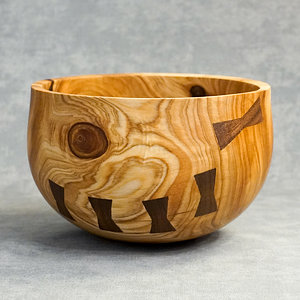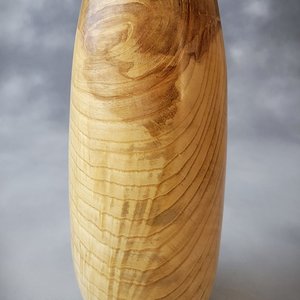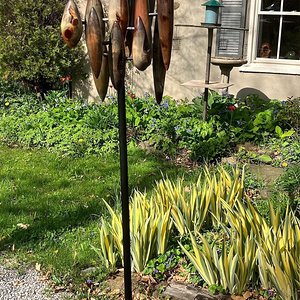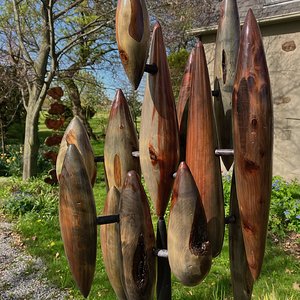Torreya wood, aka Stinking Cedar. More information about the timber in the comment below. I posted many progress photos in the "What's on Your Lathe" thread. Here is the final piece. To mitigate cracks I added 9 Black Walnut and Wenge pewa of various sizes, as well as a couple of Honduran Mahogany poho patches on some weak endgrain areas. I filled larger cracks and inclusions with a mixture of ground bark and coffee beans (thank you
@Leo Van Der Loo for the tip!). Finished with oil and shellac. 8"d x 5.5"h.


